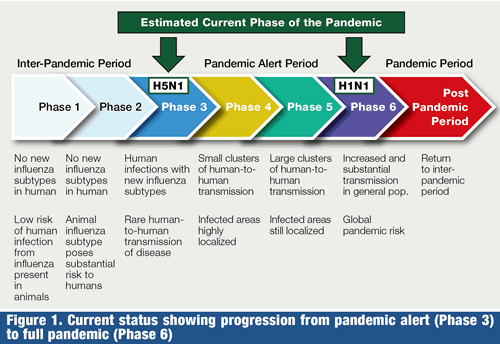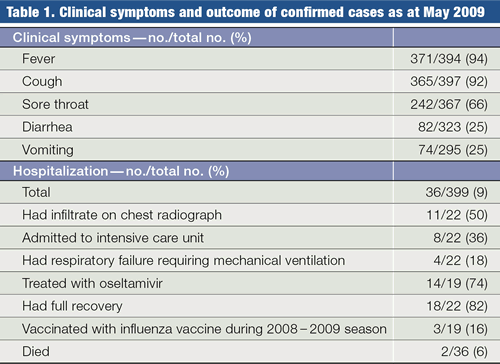Congress Report: Influenza A H1N1 Remains a Serious Threat

![]() High Rate of Transmission
High Rate of Transmission
Two issues need to be considered when evaluating the threat of a pandemic. Firstly, the virus that causes the infection must be pathogenic and secondly, it must be transmissible between humans. Investigation of the H1N1 strain has shown that at present it does not possess the virulence markers associated with the Spanish flu virus or the H5N1 strain. However, countering this is the fact that transmission of the H1N1 virus is exceptionally high, with each infected case infecting another 1.4 -1.6 people. Due to this high rate of transmission, WHO influenza expert, Dr. Keiji Fukuda, has said it is now too late to go for an approach aimed at containing this virus, but rather one that seeks to mitigate its effects.

Professor Osterhaus outlined three possible future scenarios relating to this virus. First, it could simply disappear spontaneously. However, available data relating to the spread of the disease make this outcome unlikely. Second, it could cause a mild pandemic such as the 1957 Asian flu or, in the worst case, could undergo mutation and genetic reassortment with H3N2, H5N1 or H1N1 strains to cause a more severe pandemic.
Global pandemic preparedness should focus on societal as well as medical interventions. Societal strategies include using masks and closing areas where large groups congregate such as schools. Medical interventions include a three- pronged attack covering surveillance, diagnosis, effective antiviral therapy and vaccination. Professor Osterhaus stressed the need to do better in vaccination production, emphasising the lack of significant advances on techniques developed 60 years ago. With the response time required to produce vaccines at least 6 months, and the overall production capacity too low, there is a problem in not having sufficient capacity to fully manage a serious pandemic. At the present time, he noted that there is the capacity to produce enough vaccine to protect an estimated 1 billion people―but with the world’s population at 6.7 billion there is a serious shortfall.
![]() Recommendations for Clinical Management
Recommendations for Clinical Management
The clinical aspects of the H1N1 pandemic were then addressed by Javier Garau, who commented that clinicians need to pay attention to the high rate of infection in the 10-18 year age group, with the median age of infection being 20 years of age. This is in contrast to seasonal flu, which has its greatest impact on the young and elderly. Another important consideration is the clinical syndrome with patients presenting with abrupt onset of symptoms, characterised by 94% of cases having a high fever and an increased incidence of cough. A feature helping to differentiate H1N1 influenza from classic seasonal flu is the high rate of gastrointestinal symptoms in patients with the pandemic strain. This includes diarrhea as well as nausea and vomiting, which may reduce the efficacy of oral therapies.

Professor Garau stressed that mortality from pandemics is usually due to a secondary bacterial pneumonia. His recommendations for clinical management included treating patients seen within the first 48 hours of infection at risk of more severe disease or pregnant or children. Also, those seen after 48 hours could be treated with combined antiviral therapy. In those situations with sufficient stockpiles, he recommended prophylactic management of contact cases. In addition to these critical efforts of diagnosis and treatment of bacterial pneumonias well as stockpiling of antibacterial and bacterial vaccines should be a high priority. The general view of the session was that the virus must not be underestimated, and the need for continued vigilance in monitoring this potentially catastrophic situation.

(Juergen Horn)









